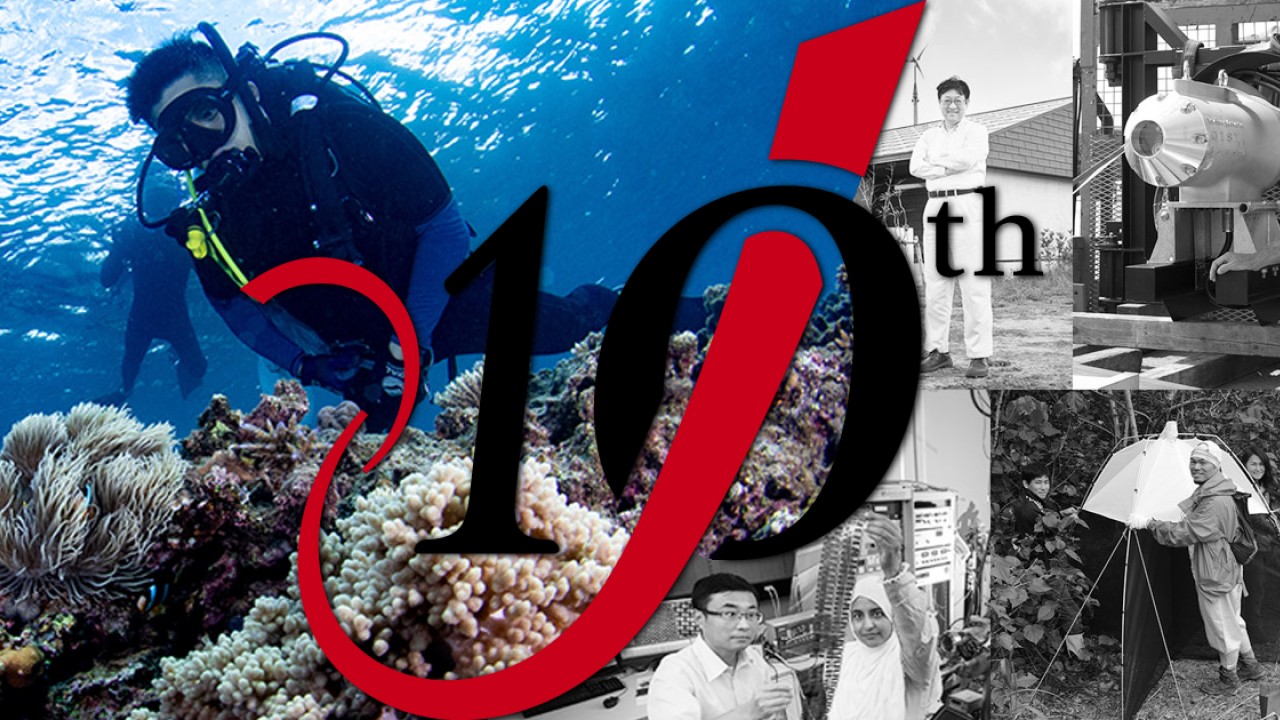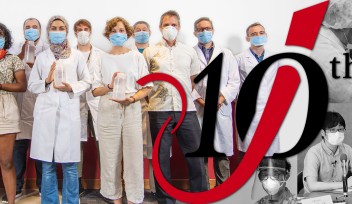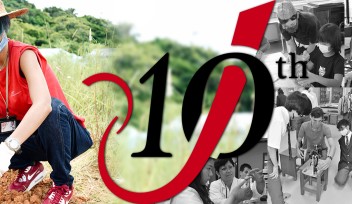Okinawa’s natural environment is under threat, how can scientists help?

To commemorate 10 years since the Okinawa Institute of Science and Technology Graduate University (OIST) was established, the university’s president Dr. Peter Gruss reflects on OIST’s connection to Okinawa in a four-part series focusing on the economy, education, environment, and health, respectively. This time’s theme is “environment".
Cutting-edge genomics technology, wildlife monitoring systems, and pest identification workshops are some of the methods that OIST has utilized to protect Okinawa’s stunning natural environment over the last decade, says Dr. Peter Gruss, current president and CEO of OIST. “However,” he continued. “There is still a lot of work to be done to properly understand and mitigate the impacts that might cause harm.”
With a number of human-induced phenomena threatening Japan’s only subtropical prefecture, Dr. Gruss stated that the next ten years will be a critical period for maintaining and enhancing Okinawa’s natural environment, both on land and in the ocean.
“We appreciate that Okinawa has a unique environment within Japan and the world, with a diverse abundance of plants and animals in the sea and on land. At OIST, we are trying to take all the measures we can to provide information on these ecosystems so we can meet the challenges that are coming through from climate change, waste, and other impacts.”
Dr. Gruss highlighted that, in addition to being a great tourist attraction, coral is important for the marine ecosystem, providing shelter for fish, shrimp, and many other creatures. Coral reefs are a critical part of the food system, with larger fish—and in turn humans—counting on them as food sources. Tropical fish tend to already live at their highest tolerance with regards to temperature. If ocean temperatures continue to rise, then the coral reefs might degrade, and the fish might leave or die. The loss of the coral reef ecosystem would be hugely problematic and irreversible. In fact, it would impact Okinawa across the board—from its economy to its culture.
To help protect and restore the reefs around Okinawa, OIST’s marine scientists are determined to understand them at every scale. These scientists are invested in unravelling the molecular composition of coral and the other animals living on the reef. This research could reveal why the reef is what it is and what will happen if the water temperature goes up by another degree. It has already identified types of coral that are more resilient to hotter environments, hinting at what coral reefs could look like in the future.
“We need to have a holistic understanding of the coral, fish, and invertebrates that live in this ecosystem. Climate change is now inevitable. We need to be prepared. We can suggest measures that should be taken so that we can still have coral if the temperature is one degree higher than today.”
OIST researchers are also part of the International CO2 & Natural Analogues Network (ICONA). The goal of this network is to look at volcanoes, tidal lagoons, and underwater vents that expel higher than average CO2 levels into their immediate environment, causing the surrounding ocean to mimic future environments. By studying the marine communities found in these areas, the scientists hope to learn more about the future of the ocean around Okinawa and further afield.
Back on land, OIST ecologists are collaborating with other local universities, as well as high schools, museums, and government entities on the Okinawa Environmental Observation Network (also known as the OKEON Churamori project). This project has established more than twenty monitoring sites over the main island of Okinawa to record animal activity. The primary goals of OKEON is to understand Okinawa’s terrestrial environment and how it’s changing so that threatened species can be protected, and to share these findings with the Okinawan community. Notably, this monitoring system also catches alien species that might have a serious impact on the island’s native biodiversity.
Dr. Gruss expressed particular concern around fire ants, which he described as a vicious ant species. They have not yet established in Okinawa, but they are frequently found in international ports in mainland Japan. If they arrive in one area of Okinawa, efforts should be made to prevent them from invading the rest of the prefecture. To prepare for this situation, OIST researchers have coordinated a countermeasure system with governmental organizations. As part of this work, the researchers provide fire ant identification workshops. At the events, officials from public health centers, ports, airports, and the local government learn how to identify fire ants from the other species in Okinawa.
Additional activities coordinated by the OIST community include organizing regular beach clean-ups to remove plastic from the coastline, and co-establishing an eco-tourism program to conserve and restore local clownfish populations. And to reduce red soil being washed into the ocean by rain, OIST members are joining forces with Onna Village to plant sunflowers, common cosmos, hairy vetch, and other bushes in Onna’s green belt and researchers are looking at how honeybees can be used to help prevent the soil runoff.
“OIST’s activity is widely spread and directed towards understanding Okinawa’s ecosystem,” explained Dr. Gruss. “To formalize this, in August 2021, OIST signed an agreement with six partners to collaborate and cooperate on the conservation and management of the UNESCO World Natural Heritage sites located in the north of Okinawa’s main island and on Iriomote Island. The aim of this agreement is to help develop future leaders among the younger generation with the assistance of knowledge found in the field. Here at OIST, we want to be part of the solution in protecting our island home from threats that are impacting its environment now and in the future.”
Related articles
For press enquiries:
Press Inquiry Form














